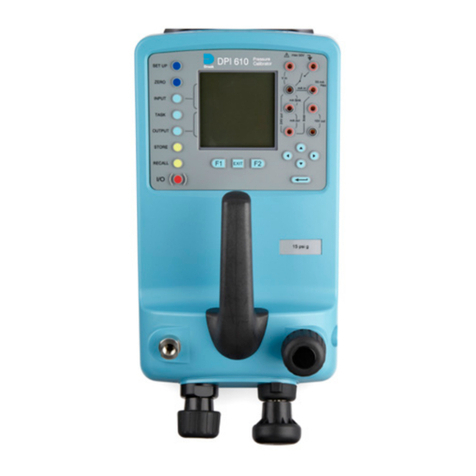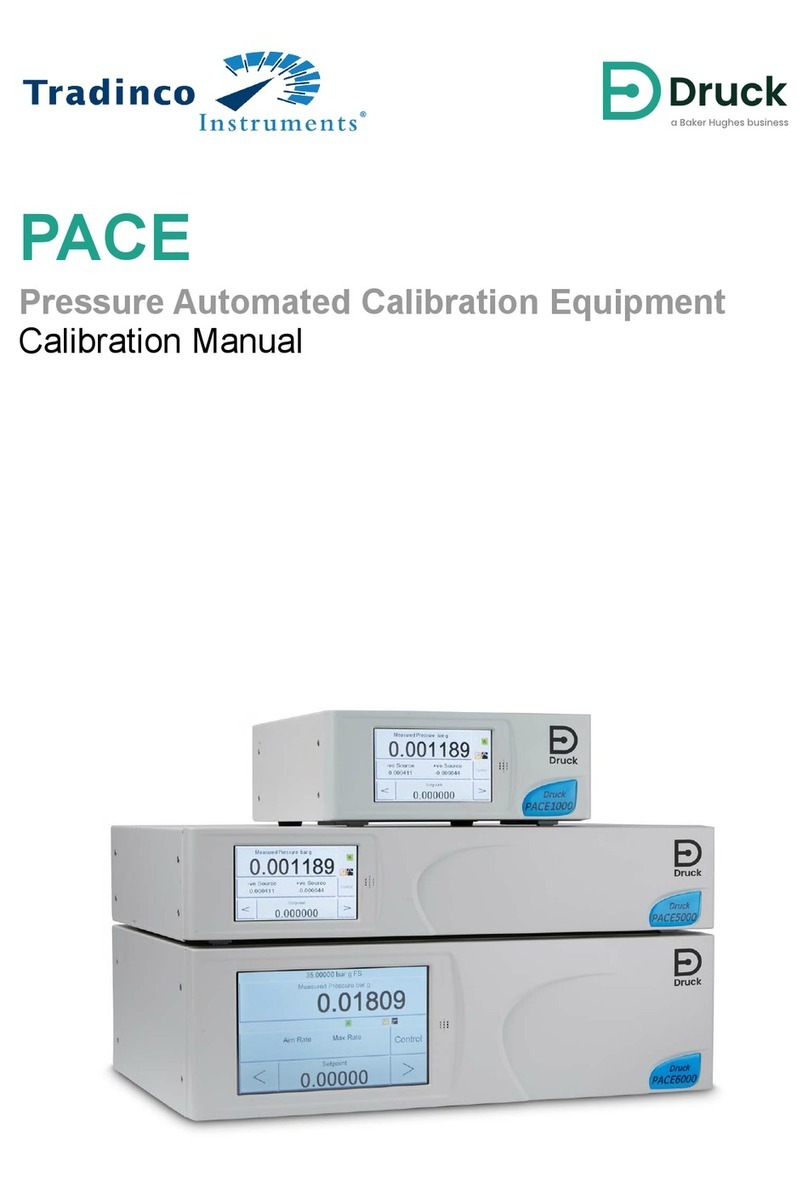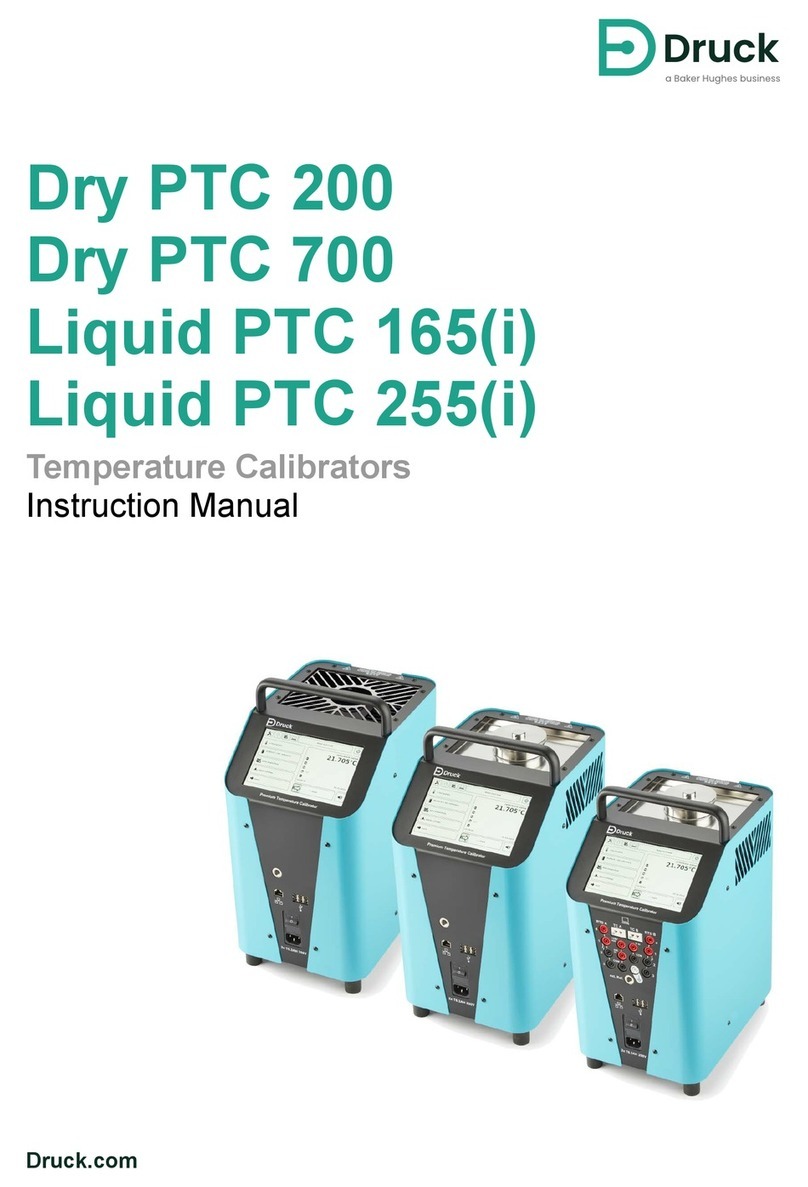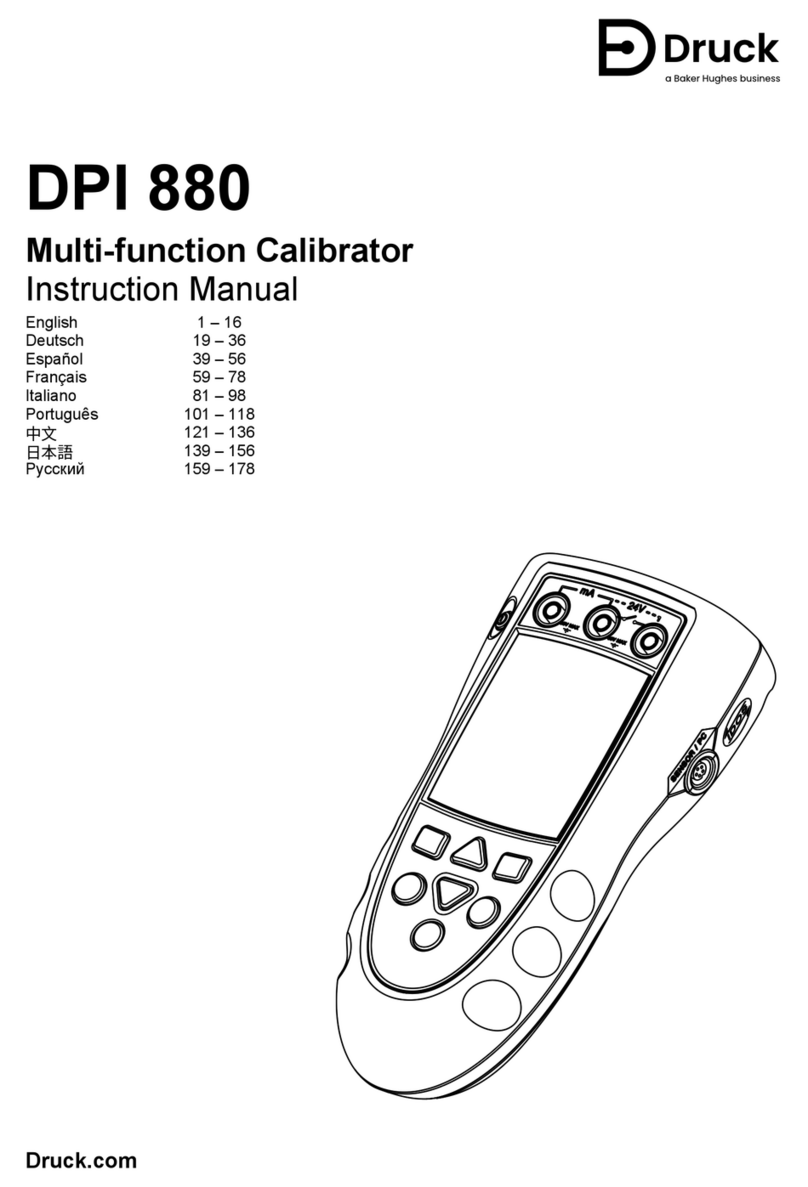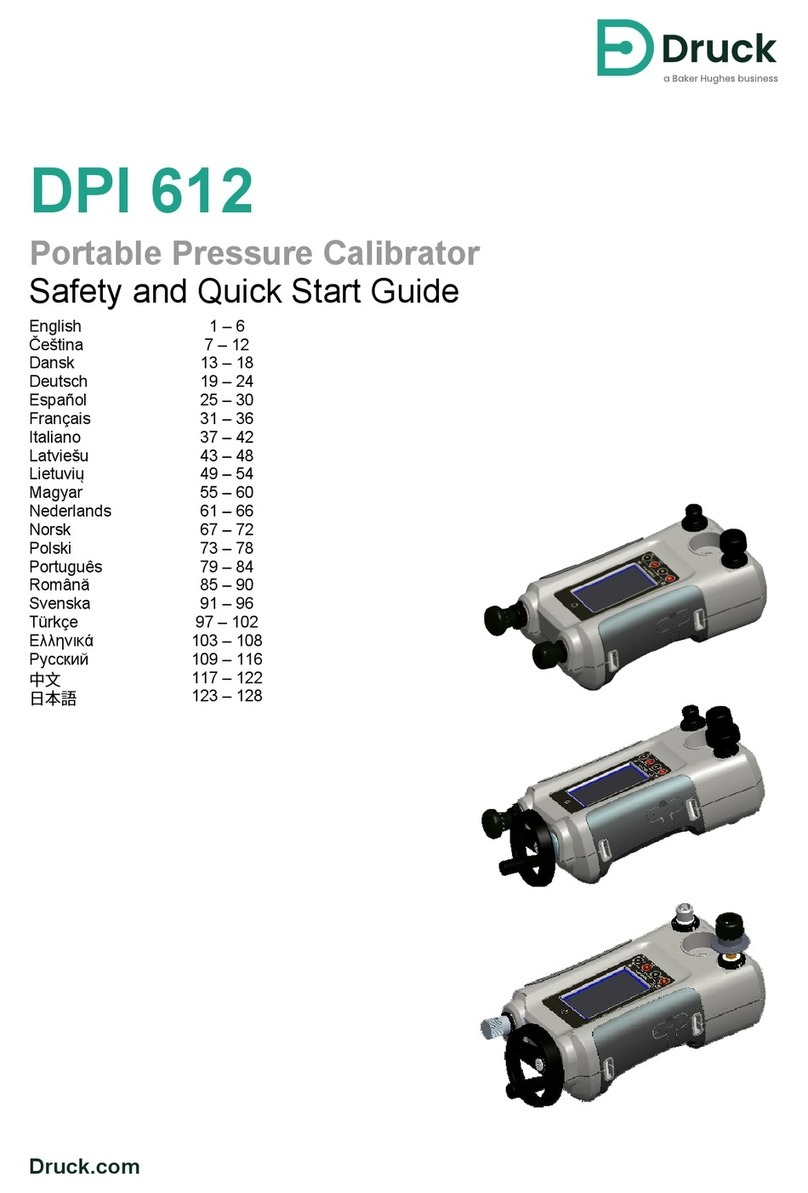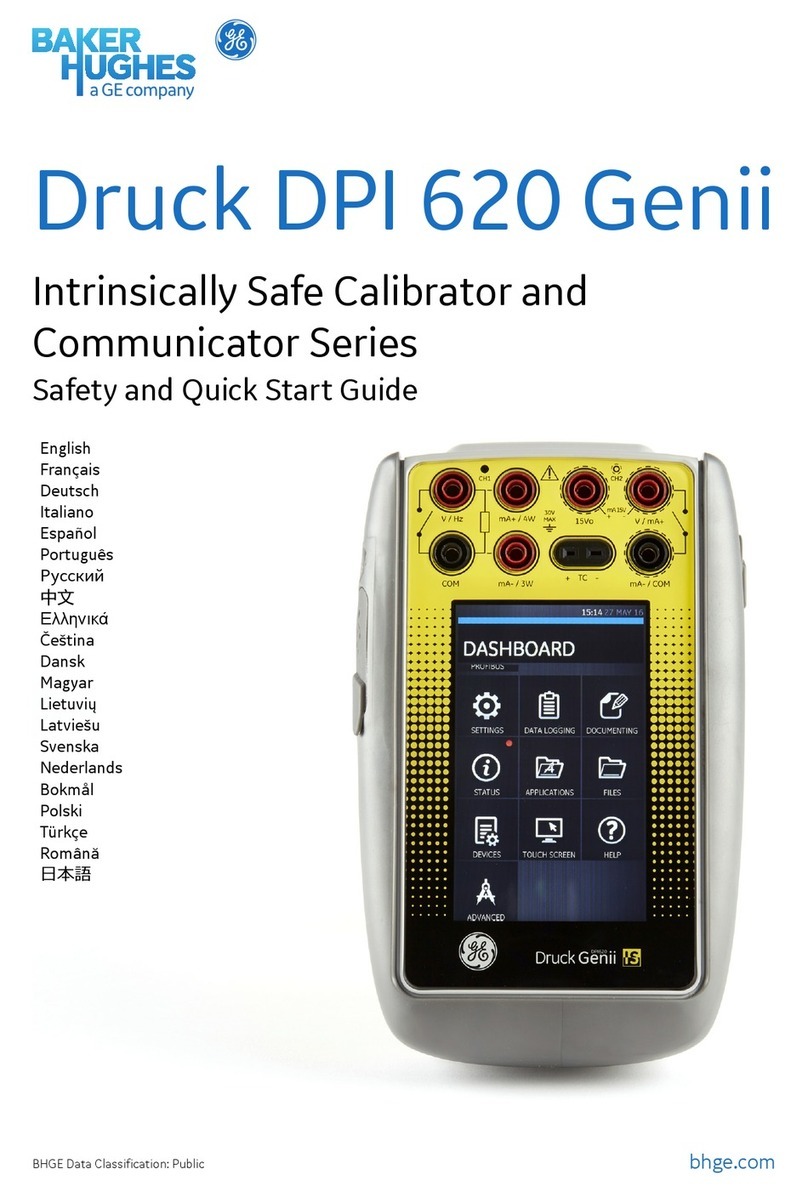
Copyright 2005 Baker Hughes Company.
English–DPI880 Instruction Manual | 1
Contents
1. To Start 2
1.1 Location of Items 2
1.2 Items on the Display 2
1.3 Prepare the Instrument 3
1.4 Power On or Off 3
1.5 Set up the Basic Operation 3
1.6 Select a Task (Measure and/or Supply) 3
1.7 Set Up the Settings 4
2. Operation 5
2.1 Electrical Connections 6
2.2 Communications Port Connections 6
2.3 Change the Output Values 6
2.4 Measure/Supply mA 6
2.5 Measure/Supply Volts or mV 7
2.6 Measure/Supply Hz or Pulses 7
2.7 RTD/Ohms Connections 8
2.8 Thermocouple (TC) Connections 8
2.9 Transmitter Calibration 9
2.10 Switch Test 9
2.11 UPM Pressure Measurements 10
2.12 Error Indications 10
3. Maintenance 10
3.1 Return Goods/Material Procedure 10
3.2 Clean the Unit 11
3.3 Replace the Batteries 11
4. Calibration 11
4.1 Before You Start 11
4.2 Procedures: mA Input 11
4.3 Procedures: mA Output 12
4.4 Procedures: mV/Volts Input 12
4.5 Procedures: mV/Volts Output 12
4.6 Procedures: Hz Input/Output 12
4.7 Procedures: CJ Input 13
4.8 Procedures: RTD (Ohms) Input 13
4.9 Procedures: RTD (Ohms) Output 13
4.10 Procedures: TC (mV) Input/Output 14
4.11 Procedures: IDOS UMM 14
5. Specification 14
5.1 General 14
5.2 Electrical (Figure A1 - Item 10) 14
5.3 Electrical Connectors (Figure A2) 15
5.4 Temperature Ranges (RTD) 15
5.5 Resistance Ranges (Ohms/RTD) 15
5.6 Frequency 15
5.7 Temperature Ranges (TC) 16
5.8 mV (TC) Range 16
Introduction
The DPI880 Multi-function Calibrator is part of the Druck
DPI8XX series of hand held instruments.
This series of instruments uses Intelligent Digital Output
Sensor (IDOS) technology to give instant plug and play
functionality with a range of Universal Measurement
Modules (UMM). Example: the Universal Pressure Module
(UPM).
The DPI880 includes these functions:
• Measure mA, Volts/mV, Hz/pulse count
• Supply mA, Volts/mV, Hz/pulse count
• Measure/simulate:
i. Resistance Temperature Detector (RTD): Ω or
°C/°F
ii. thermocouple (TC): mV or °C/°F
iii. a resistor (Ω)
• Cold Junction (CJ) compensation: Automatic/Manual
• Step/Ramp functions: Automatic/Manual
• Communications port: IDOS or RS 232
• Language selection (Refer to Table 1)
•1Measure pressure/Leak test: External IDOS UPM
•1Snapshot: Up to 1000 displays with a date/time stamp
• 250Ω series resistor. Use this instrument together with
a HART® communicator to set up and calibrate
HART® devices.
• Switch test
• Other functions: Hold, Backlight
Safety
Before you use the instrument, make sure that you read
and understand all the related data. This includes: all local
safety procedures, the instructions for the UMM (if
applicable), and this publication.
Before you start an operation or procedure in this
publication, make sure that you have the necessary skills (if
necessary, with qualifications from an approved training
establishment). Follow good engineering practice at all
times.
1. Optional item.
WARNING Do not use with media that has
an oxygen concentration > 21 % or other
strong oxidizing agents.
This product contains materials or fluids that
may degrade or combust in the presence of
strong oxidizing agents.
It is dangerous to ignore the specified limits
for the instrument or to use the instrument
when it is not in its normal condition. Use the
applicable protection and obey all safety
precautions.
Do not use the instrument in locations with
explosive gas, vapor or dust. There is a risk of
an explosion.
To prevent electrical shocks or damage to the
instrument, do not connect more than 30 V
between the terminals, or between the
terminals and the ground (earth).
UPM only. To prevent a dangerous release of
pressure, isolate and bleed the system before
you disconnect a pressure connection.
